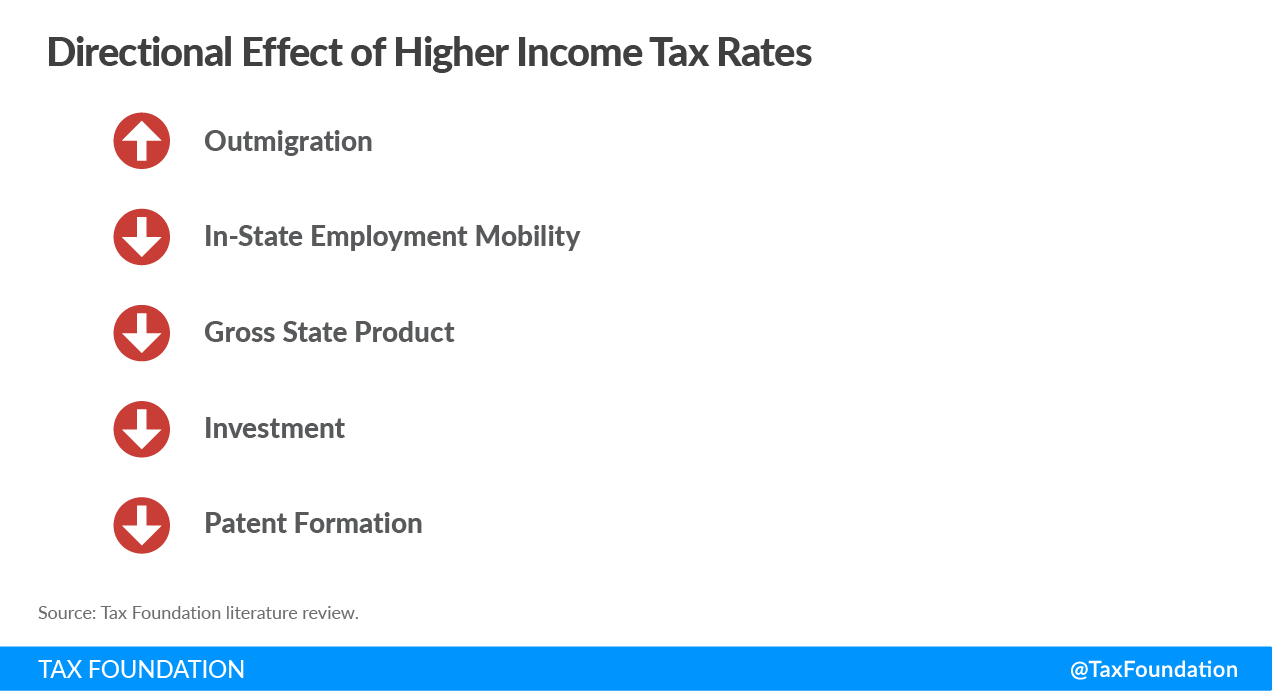Canada Health-care Premiums & Upward Mobility
Imagine a worker who gets a raise and ends up paying in tax more than 50 percent of that raise. This is the case for a Canadian worker who earns CAD 48,124. With an increase in pay of CAD 822, he would face a 59 percent marginal tax rate. This Canadian worker will end up with a net pay increase of only CAD 334, while the biggest portion of the raise goes directly towards the employee social security contribution.
This is why the marginal tax wedge is relevant for understanding how workers might benefit (or not) from an increase in pay once taxes and social security contributions enter the picture.
High marginal tax rates at different earning levels like the one observed in the case of this Canadian worker act as barriers to upward mobility, discouraging people from advancing in their careers. Very often these high rates are hidden in complex policy structures. However, a recently published study by Archbridge Institute and Tax Foundation highlights the underlying policies that drive the marginal tax rate spikes that workers are subject to in a number of countries.
Canadian Workers Can Face Marginal Tax Rates (MTR) That Claim 60 Percent of Additional Earnings| Canadian Single Worker Average Labor Cost: CAD 80,929 (US$64,905) | ||
|---|---|---|
| Total Labor Cost | CAD 53,233 | CAD 79,399 |
| Net Earnings Before the Raise | CAD 38,205 | CAD 54,518 |
| Amount of the Raise | CAD 822 | CAD 765 |
| Amount of Additional Tax/Benefits Reduction Due to the Raise | CAD 488 | CAD 328 |
| % of the Raise Eaten up by the MTR | 59.33% | 42.84% |
| Net Earnings After the Raise | CAD 38,539 | CAD 54,956 |
|
Source: OECD, “Taxing wages – Tax wedge decomposition,” OECD, “Taxing wages – Comparative tables,” and Tax Foundation calculations. |
||
While advancing their careers Canadian workers could face up to two important marginal tax rate spikes and lose 60 percent of additional earnings to the provincial health-care premium.
In 2021, the first marginal tax rate spike occurred at 65 percent of the average wage and approximately 73 percent of the median wage. As shown before, if the employer of this Canadian worker increased compensation by just CAD 822 more, the net pay increase for the worker was only CAD 334 while the biggest portion of the raise, CAD 202, went directly towards the employee social security contribution. This Canadian worker with no children faced a marginal tax wedge of 59 percent for a 1 percent increase in gross earnings on top of the gross annual wage of CAD 48,124.
Moving up the income ladder the worker faced a marginal tax wedge of 43 percent for a 1 percent increase in gross earnings on top of the gross annual wage of CAD 72,556.
This happens because the provincial health-care premium moves to a different rate at these two levels of income. Although there is no federal health benefit plan, the provinces of Quebec, Ontario, and British Columbia levy health premiums on individuals.
In Ontario, the Canadian province used by the Organisation for Economic Co-operation and Development (OECD) to model the tax wedge, the premium is determined based on taxable income and operates over different income bands. The premium has a fixed and a variable component that shifts up to a different amount and rate at the taxable income of CAD 48,000 and CAD 72,000, where the two spikes are observed.
This could keep some workers in these provinces just below the threshold of earnings that triggers the tax rate spikes. Eliminating these barriers by eliminating the health-care premium or implementing a unique and lower rate will allow workers to have access to higher wages without confronting this barrier.
In order to reduce the complexity of this contribution system, the Canadian provinces could follow the Australian and Lithuanian examples by applying a flat social security contribution. In the case of Australia, a single earner with no children has a generally flat marginal tax wedge profile, starting at 32.1 percent and reaching 49.7 percent at labor costs above AUD 189,658. The increase in the marginal tax wedge rate is due to a progressive central income tax, while social security contributions have a flat rate.
Lithuania also has a relatively flat marginal tax rate at around 44.1 percent. Additionally, in 2019, Lithuania also shifted most of the employer social security contributions to the employee side, which translated into a gross salary increase of 28.9 percent. By closing the gap between the total labor cost and the gross salary, labor taxation became more transparent and simple.
Although many of the underlying policies generating these marginal tax rate spikes were designed to help finance the soaring health-care costs in the Candian provinces many come with trade-offs that policymakers must keep in mind when planning to reform the tax-benefit system. This is especially problematic when these high marginal tax rates affect Canadian workers earning less than the average wage. Reshaping some of these policies to generate a smoother variation of marginal tax rates over different income levels would likely raise labor supply and encourage the upward mobility of workers and especially that of low-income workers.
Note: This is part of a five-part blog series that highlights the findings of a recently published study by Archbridge Institute and Tax Foundation and explores the underlying policies that drive the marginal tax rate spikes that workers are subject to in a number of countries.






